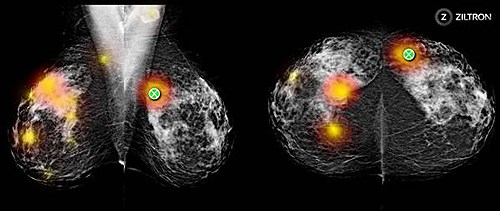About 1.6 million women have mammograms each year in Australia, however, reading mammograms is one of the most challenging tasks in radiology according to Program Co-Director, Professor Patrick Brennan from the University of Sydney's Faculty of Health Sciences.
BreastScreen Australia aims to maximise the number of breast cancers diagnosed early, enabling early treatment and improving outcomes for women. Key to this is providing feedback and support to image readers.
"The project supports this through increasing the opportunity for radiologists to monitor their performance and receive feedback following examination of series of test cases," says Professor Brennan.
The BreastScreen Reader Assessment Strategy (BREAST) is based on a world-first web-based program of digital screen-reading test sets designed to assess the performance of the user in correctly identifying abnormalities on mammograms and in interpreting whether or not the lesions identified pose a risk of breast cancer.
"The strength of the project is the comprehensive collection of breast X-rays which form the test sets," says Professor Brennan. "They have been developed in partnership with BreastScreen NSW and thoroughly validated through subsequent scans and biopsy."


The BREAST Project will benefit all BreastScreen Australia services, which offer screening at more than 500 locations Australia wide. The Ziltron web-based system with its unique embedded algorithm allows for the provision of real-time and instant evaluation and feedback to participating radiologists and will also enable the development of national performance standards based on confidential data collection.
"This will allow us to determine the level of variation across BreastScreen Australia, set reference levels for good performance and encourage targeted quality improvement programs to manage under performance," says Warwick Lee, State Radiologist for BreastScreen NSW, Adjunct Associate Professor at the University of Sydney and Co-Director of BREAST.
"The data collection - made possible through our technology partnership with Dr John Ryan and Ziltron - also presents immense opportunities for further research into the types of lesions that are creating difficulties for readers, either through underdiagnosis or overdiagnosis, and has huge potential for improving standards in the future," comments Professor Brennan.
Dr John Ryan, CEO of Ziltron, a global company specialising in the field of real-time web-based performance-analysis systems, said the joint venture puts Australia at the forefront of this field.
"By implementing our system as a breast-screening quality and performance tool, Australia is proving to be the most innovative and progressive nation in this field."
The Department of Health and Ageing has funded the development and nationwide implementation of the BREAST Project, building on the pilot funding provided by the Royal Australian and New Zealand College of Radiologists (RANZCR). Radiologists volunteer to take part in the project which is recognised by RANZCR as continuing professional development contributing to reaccreditation.